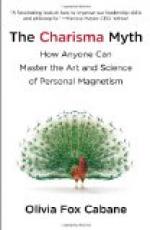There is a continual self-consciousness in all animals; it is inseparable from all their internal and external acts, from every fact, passion, and emotion; and this is clear and obvious. This fundamental and persistent self-consciousness—persistent in dreams, and even in the calmest sleep, which is always accompanied by a vague sensation—is the consciousness of a living subject, active, impressionable, exercising his will, capable of emotions and passions. It is not the consciousness of an inert thing, passive, dead, or extrinsic; for animal life consists in sensation of greater or less intensity, but always of sensation. Consequently, such a consciousness signifies for the animal a constant apprehension of an active faculty exercised intrinsically in himself, and it makes his life into a mobile drama, of which he is implicitly conscious, of acts and emotions, of impulses, desires, and suspicions.
This inward form of emotional life and psychical and organic action, into which the whole value of personal existence is resolved, may be said to invest and modify all the animal’s active relations to the external world, which it vivifies and modifies according to its own image. The subsequent act of doubling the faculties which takes place in man does not occur in the animal; a process which modifies through the intellect the spontaneous and primitive act. Consequently, the active and inward sense which is peculiar to the animal is renewed in him by the external things and phenomena of nature which stimulate and excite him.
Two kinds of things present themselves to his perception: other animals, of whatever species, and the inanimate objects of the world. As far as the other animals are concerned, which are obvious to his perception, it is perfectly evident that upon these he will project his whole internal life of consciousness and emotions, and will feel their identity with himself by his implicit and intuitive judgment. And in fact, the movements, sounds, gestures, and forms of other animals necessarily cause this sense of inward psychical identity, whence arises the implicit notion of an animated and personal subject. Any one who observes, however superficially, the conduct of animals to each other when they first meet, cannot doubt this truth for an instant.
Although the external form and character of the animal perceived are important factors of the implicit notion of an animated personal subject, this belief is even more due to the animal’s inward consciousness of himself as a living subject which is reflected in the extrinsic form of the other and is identified with it. The spontaneous and personal psychical effort does not decompose the object perceived into its proper elements by means of reflex attention, but it is immediately projected on those phenomena which assume a form analogous to the sentient subject.
The fact of this law must never be forgotten in the analysis of animal intelligence and sensation. All those who do not keep clearly in view the real and genuine character of the sentient and intelligent faculty in animals are liable to error.




